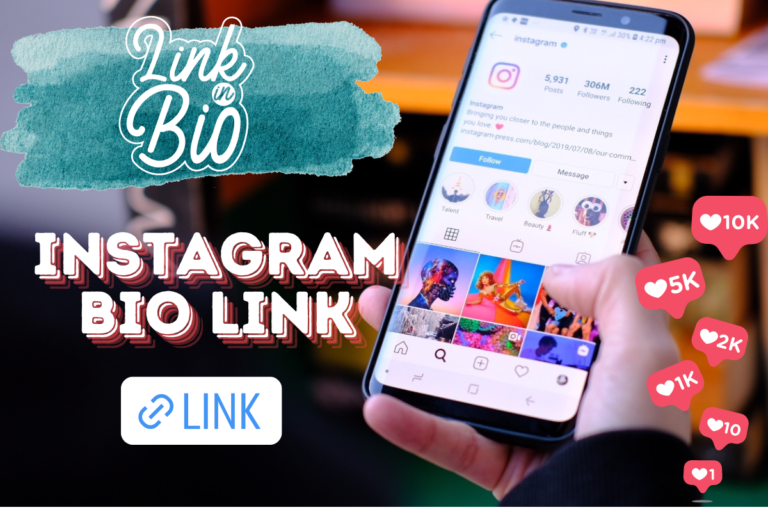10 Expert Tips on Branding to Build a Strong Identity
Creating a successful brand is crucial for any business looking to establish itself and grow. A strong brand identity helps to differentiate your business from the competition, build trust with your customers, and create brand loyalty. Some business use business branding services to make this happen.. However, building a brand can be a daunting task, especially if you’re just starting out. Here are some expert tips on branding. This will help you to set up for success.
What is Brand Identity?
Brand identity is the unique and distinct representation of a company, its products or services, and its overall brand image. It encompasses all the visual and non-visual elements that make up a brand. It includes a logo, tagline, brand voice, and brand messaging. A powerful brand identity is essential to creating positive brand experiences and increasing brand recognition.
A company’s branding efforts are an important part of developing a strong brand identity. This includes creating marketing material, social media posts, and other branding efforts that reflect the company’s target audience and brand strategy. Branding tips for small businesses include developing a brand identity that is unique, memorable, and consistent across all marketing channels.
Creating your brand identity involves understanding your target audience and developing a brand strategy that speaks to their needs and preferences. A successful branding and marketing strategy takes time and effort. But, building a strong brand can have a significant impact on your business’s success.
A great job in building a strong brand identity. This involves creating a cohesive visual identity that reflects your brand’s values and personality. This includes developing a strong brand voice that resonates with your target audience and delivering consistent messaging across all marketing channels.
The ultimate goal is to build a strong brand that is recognizable and resonates with customers. Thus, leading to increased brand recognition, customer loyalty, and ultimately, business success.
How to Build a Strong Brand Identity
Building a strong brand identity is critical to the success of any business. A strong brand identity helps to establish your business in the minds of your target audience. It sets you apart from the competition. Here are some tips on branding:
1. Define your brand’s purpose and values
Defining your brand’s purpose and values is crucial to establishing a clear and authentic brand identity. Your purpose should articulate why your brand exists and what it aims to achieve. Your values should reflect the beliefs and principles that guide your brand’s actions and decision-making. A well-defined brand purpose and values can help your brand connect with your audience deeply and build trust.
2. Conduct market research and analyze your competition
Conducting market research and analyzing your competition is essential. This is done in order to understand your target audience and how to differentiate your brand from others in the market. Market research can help you identify key trends, opportunities, and challenges in your industry. While competitor analysis can help you understand your competitors’ strengths, weaknesses, and unique selling propositions.
3. Create a memorable brand name and tagline
Your brand name and tagline are critical components of your brand identity. A memorable brand name and tagline can help your brand stand out in a crowded market. It can also make a lasting impression on your target audience.
Your brand name should be easy to remember, pronounce, and spell. While your tagline should capture the essence of your brand in a few short words.
4. Develop a cohesive visual identity with a strong logo
Your brand’s visual identity, including your logo, color scheme, typography, and imagery, is an essential aspect of your brand identity. A cohesive visual identity can help your brand appear professional, consistent, and recognizable across all channels. Your logo should be simple, memorable, and relevant to your brand. While your visual identity should align with your brand’s purpose, values, and tone.
5. Establish brand messaging and tone of voice
Establishing your brand messaging and tone of voice can help ensure consistency and clarity in all of your communications. Your brand messaging should articulate your brand’s unique value proposition and positioning. While your tone of voice should reflect your brand’s personality and values. Consistency in your messaging and tone can help build brand recognition and trust among your target audience.
6. Establish brand messaging and tone of voice
Consistently using your brand identity across all channels. This includes your website, social media, advertising, and packaging is essential to establishing a strong and recognizable brand identity. Consistency can help reinforce your brand’s messaging and visual identity. Thus, making it easier for your audience to recognize and remember your brand.
7. Create a brand style guide to maintain consistency
Creating a brand style guide can help maintain consistency in your brand identity across all channels. A brand style guide outlines the rules and guidelines for using your brand’s visual identity. This includes logo, typography, color scheme, and imagery. A comprehensive branding style can help ensure that all communications and marketing materials align with your brand’s purpose, values, and tone.
8. Build a strong online presence through your website and social media
Building a strong online presence through your website and social media is essential to reaching and engaging your target audience. Your website should be user-friendly, mobile-friendly, and optimized for search engines. Your social media profiles should be regularly updated to get the advantages of social media with relevant and engaging content that aligns with your brand’s messaging and tone. A strong online presence can help build brand awareness, foster customer relationships, and drive conversions.
9. Foster customer relationships and brand loyalty
Fostering customer relationships and brand loyalty is crucial to building a successful brand. Engage with your customers through social media, email, and other channels. This can help you understand their needs and preferences and build a strong connection with them. Offering excellent customer service, personalized experiences, and loyalty programs can help build brand loyalty and drive repeat business.
10. Continuously evaluate and adapt your brand identity over time
Continuously evaluating and adapting your brand identity over time is essential to staying relevant and competitive in a rapidly changing market. Regularly reviewing your brand’s purpose, values, messaging, visual identity, and online presence. This can help you identify areas for improvement and make necessary adjustments.
This can involve updating your brand’s messaging and visual identity to better align with changing trends and customer preferences. It also involves exploring new channels or marketing strategies to reach your target audience. Continuously evaluate and adapt your brand identity. By doing so, you can ensure that your brand remains relevant and resonates with your audience over time.
Conclusion
Effective business branding is essential for any business looking to build a strong and recognizable brand identity. By following these tips on branding, you can create a powerful brand. This can resonate with your target audience, build brand recognition, and foster customer loyalty.
Whether you’re just starting out or looking to refresh your branding efforts, it’s important to define your brand’s purpose and values. It is also important to conduct market research, create a brand name and tagline, and develop a strong logo. You can follow these tips on branding, in order to grow more.
Additionally, you should establish brand messaging and tone of voice. Consistently use your brand identity across all channels, and create a brand style guide to maintain consistency. Build a strong online presence through your website and social media and foster customer relationships.
Continuously evaluating and adapting your brand identity over time are also important factors for successful branding. By incorporating these tips on branding into your branding strategy, you can create a powerful and enduring brand. This will stand out in your market.
Frequently Asked Questions (FAQs)
1. What are the 4 steps of branding?
Branding involves four key steps. The first step is defining your brand, which involves identifying your brand’s purpose, values, and unique qualities. The second step is developing your brand strategy, which involves understanding your target audience, and competition, and creating a plan to differentiate your brand. The third step is creating your brand identity, which includes developing a cohesive visual identity that reflects your brand’s values and personality. The final step is consistently executing your branding efforts across all channels to establish a strong and recognizable brand identity.
2. What are the 5 branding strategies?
There are five primary branding strategies to consider. The first is brand extension, which involves leveraging your existing brand to expand into new product or service categories. The second is brand repositioning, which involves changing the way your brand is perceived by consumers. The third is brand revitalization, which involves breathing new life into a brand that may have lost its relevance or appeal. The fourth is co-branding, which involves partnering with another brand to create a new product or service. The final strategy is personal branding, which involves leveraging your personal reputation and expertise to build a strong brand identity.
3. How to brand a product?
To brand a product, you need to start by identifying your target audience and understanding their needs and preferences. Next, you should develop a brand positioning statement that defines your brand’s unique value proposition. Then, you need to create a brand name, logo, and tagline that reflects your brand’s identity and values. Finally, you should consistently execute your branding efforts across all channels to establish a strong brand identity and increase brand recognition.








